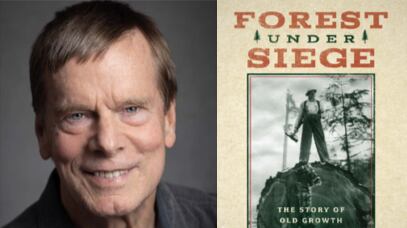Rand Schenck, environmentalist and author, spends much of his time at and around a recreational cabin in the Gifford Pinchot National Forest. Due to protections of a nearby mineral spring, the part of the forest his cabin occupies is one of the few remaining in Washington state that’s still primarily made up of old growth.
“I was particularly taken,” Schenck says. “Here I was living in this really spectacular old growth grove, yet as an environmentalist, I was very aware that almost all the old growth was cut throughout the Pacific Northwest, so I was really curious about how that happened.”
This curiosity is what led him to write his first book, which documents the Forest Service’s history after the death of its first chief, Gifford Pinchot, who famously said the Forest Service should provide the “greatest good for the greatest number in the long run.”
On Wednesday, July 31, Schenck will read from his first book, Forest Under Siege: The Story of Old Growth After Gifford Pinchot (Washington State University Press, 258 pages, $24.95) at Powell’s City of Books.
After WWII, and around the time of Pinchot’s passing, the Forest Service became far more interested in planting fast-growing trees that were easier to log than in preservation, a choice that greatly reduced the amount of old growth in the area.
Schenck uses the Gifford Pinchot National Forest as a representation of the Forest Service’s actions throughout the Pacific Northwest. At his upcoming reading, Schenck will discuss the historical phases that national parks have been through over the past 100 years.
“We had the stewardship phase for about 30 years before World War II where very few logs came off the parks,” Schneck says. “Then we had this high-production phase, that was just totally unsustainable. Then all that cracked in the early ’90s and entered this third phase that I call the ‘ecological management stage,’ which really is putting in place the conditions for old growth to reemerge.”
SEE IT: Rand Schenck reads from Forest Under Siege: The Story of Old Growth After Gifford Pinchot at Powell’s City of Books, 1005 W Burnside St., powells.com. 7 pm Wednesday, July 31. Free.

